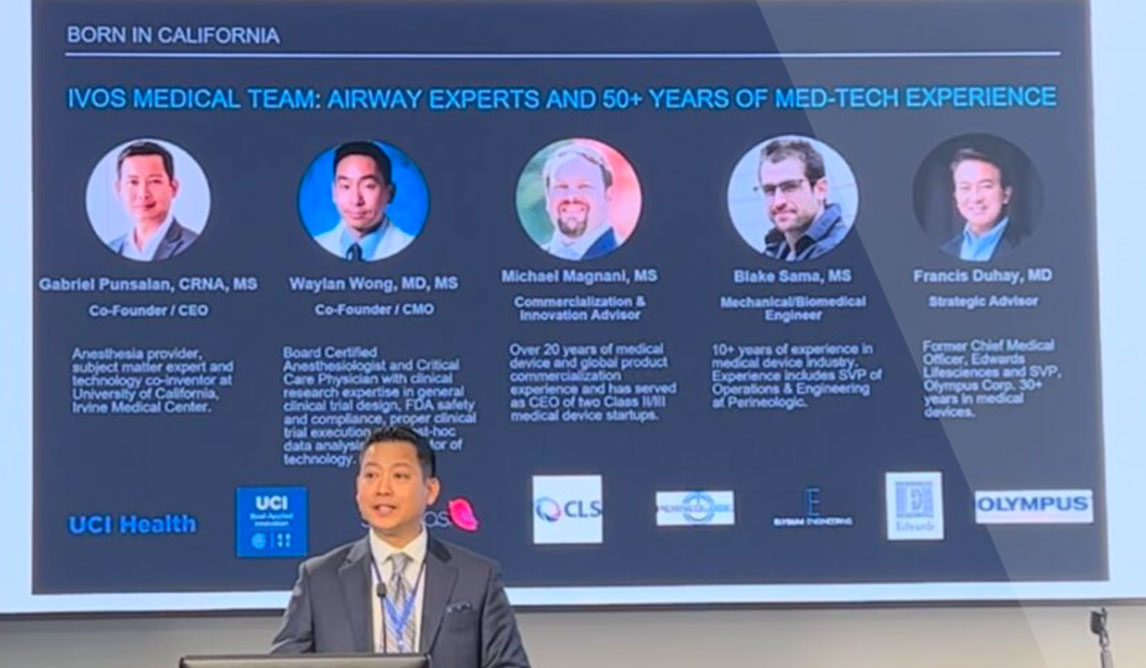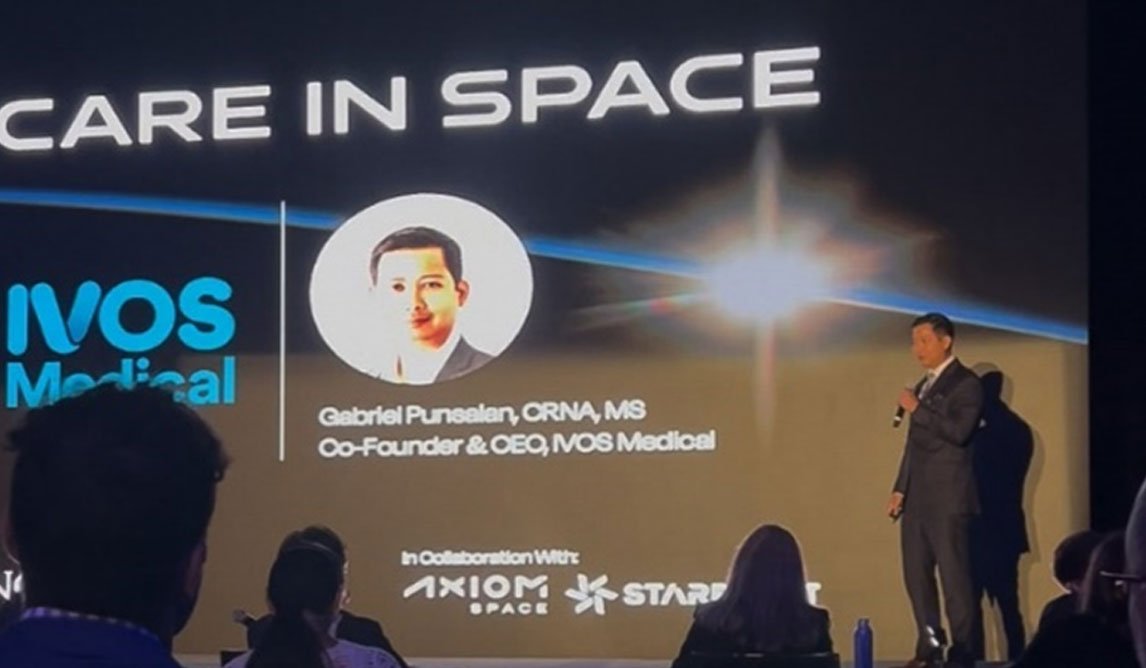Past Events
February 2023
UC REGENTS SPECIAL WORKSHOP – Innovation
Transfer and Entrepreneurship.
The IVOS team was selected to participate in a special event showcasing the lifesaving technology of the IVOS BOSS G4™ to the UC Regents of California.
Winter 2023
USC + LAC Department of Anesthesiology Workshop.
Gabriel Punsalan, CRNA and Waylan Wong, MD demonstrate the effectiveness of the BOSS G4™ during soiled intubations amongst CRNAs at Los Angeles General Medical Center.
UCI Department of Emergency Medicine airway workshop.
Gabe Punsalan, the CEO of IVOS Medical, demonstrated soiled airway intubation using the BOSS G4™ to Emergency Medicine residents.
Fall 2022

IVOS Medical invited to pitch at: Born in California Event
IVOS CEO Gabriel Punsalan speaks to potential investors
and partners.
Summer 2022
